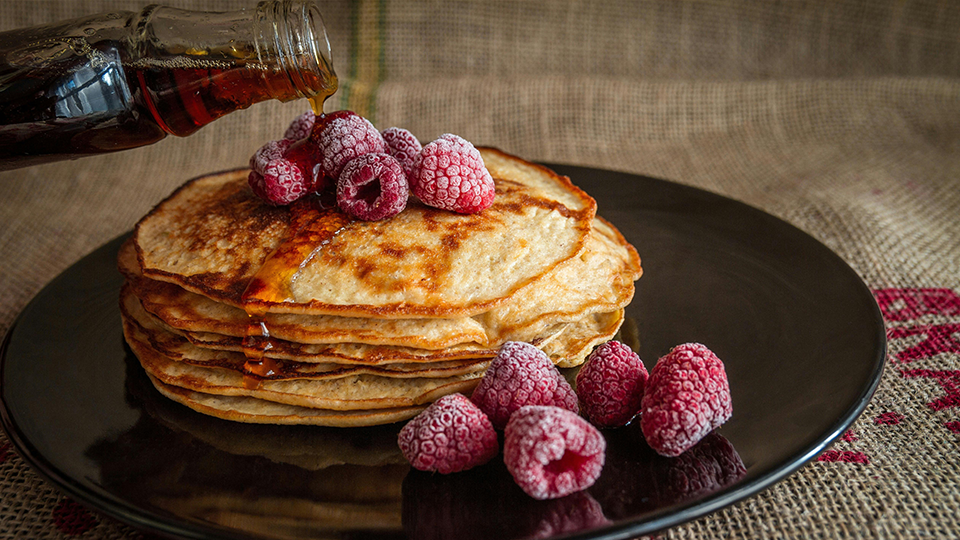When switching from a typical Western-style diet, those who replace two of their daily meals with Isagenix IsaLean® Shakes or Bars, on average, cut their total carbohydrate intake by more than half and cut their total sugar intake by nearly 12 teaspoons.
This reduction of calories from sugars and carbohydrates may have contributed to the successful and sustained weight loss reported in a 15-month trial studying the effects of the Isagenix System (1). Researchers from this study also reported that participants showed improvements in blood sugar control along with other measures of insulin sensitivity and cardiovascular health.
While Isagenix products generally have less sugar than the typical Western diet, they are not lacking natural sweetness nor are they devoid of carbohydrates and sugars. So how was it that study participants succeeded in drastically dropping their intake of sugars, carbohydrates, and calories?
Much is explained by the careful formulation of IsaLean and Whole Blend IsaLean Shakes and Bars to maintain a low-glycemic profile through natural flavors and natural sweeteners. Here’s a look at how natural sweeteners are used to create great-tasting, nutritionally balanced products without the use of artificial ingredients.
Stevia
Stevia is a natural sweetener that is produced from the leaves of the stevia plant, Stevia rebaudiana. It is one of the most popular and widely used zero-calorie natural sweeteners. Stevia is a crop that is native to South America and has been grown for centuries for its naturally sweet taste.
Gram for gram, stevia is 200 to 350 times sweeter than table sugar, which means a small amount can provide plenty of sweetness (2). When used alone, stevia extract has a mild, licorice-like flavor. This is why stevia tastes best when used in combination with other natural sweeteners.
Sugar alcohols
Sugar alcohols provide another low-calorie alternative to sugar. These compounds are naturally present in many different fruits and vegetables and provide about half as many calories per gram as table sugar.
As the name suggests, sugar alcohols are substances that have a similar structure to sugar. This similarity accounts for their sweet taste because their shape allows them to activate the same taste buds as sugar. Even though sugar alcohols have the word “alcohol” in the name, they do not contain any ethanol, which is the type of alcohol found in alcoholic beverages.
A variety of different sugar alcohols can be found in nature, and each has unique properties.
Erythritol is naturally found in many fruits and fermented foods. It is known to be almost as sweet as sugar, yet it contributes almost no calories. Erythritol has been shown to support oral health and has no effect on blood sugar (3, 4).
Sorbitol can be found in pears, apples, peaches, and prunes. It is a slower-digesting sugar alcohol that provides about half the calories as sugar as well as half the sweetness.
Maltitol comes from the simple sugar maltose, which is found in whole grains and sweet potatoes. Because it is so close in structure to maltose, it is known to taste the most similarly to sugar and is just as sweet while contributing only half of the calories.
When consumed in excess, sugar alcohols can lead to digestive upset for some people. Dried fruits, which are naturally high in sugar alcohols, can create a similar effect when consumed in excess. However, there shouldn’t be a concern when sugar alcohols are consumed in moderate amounts comparable to the amount found in Isagenix products.
Fructose
“Fruit sugar,” or fructose, is naturally found in fruits and vegetables. Unlike other sources of simple sugar, fructose is low-glycemic because it has only a modest effect on blood sugar. Fructose is nearly twice as sweet as sugar, which allows for less sugar and fewer calories overall, and delivers the same sweet taste.
Honey
Similar in sweetness to table sugar, honey is an unrefined sugary substance produced by bees from the nectar of plants (5). It has been utilized for thousands of years for its sweet taste and unparalleled stability. Honey comes in many varieties based on the plants the bees fed on, resulting in variations in glycemic and nutritional values.
Collectively, these different natural sweeteners help Isagenix keep the amount of carbohydrates in its products to a level that is nutritionally beneficial while still maintaining the same great taste consumers have come to expect.
References
- Arciero PJ, Edmonds R, He F, et. al. Protein-Pacing Caloric-Restriction Enhances Body Composition Similarly in Obese Men and Women during Weight Loss and Sustains Efficacy during Long-Term Weight Maintenance. Nutrients. 2016 Jul 30;8(8):476.
- Goyal SK, Samsher, Goyal RK. Stevia (Stevia rebaudiana) a bio-sweetener: a review. Int J Food Sci Nutr. 2010 Feb;61(1):1-10.
- Noda K, Nakayama K, Oku T. Serum glucose and insulin levels and erythritol balance after oral administration of erythritol in healthy subjects. Eur J Clin Nutr. 1994 Apr;48(4):286-92.
- Honkala S, Runnel R, Saag M, et. al. Effect of erythritol and xylitol on dental caries prevention in children. Caries Res. 2014;48(5):482-90.
- White JW Jr. Honey. Adv Food Res. 1978;24:287-374





